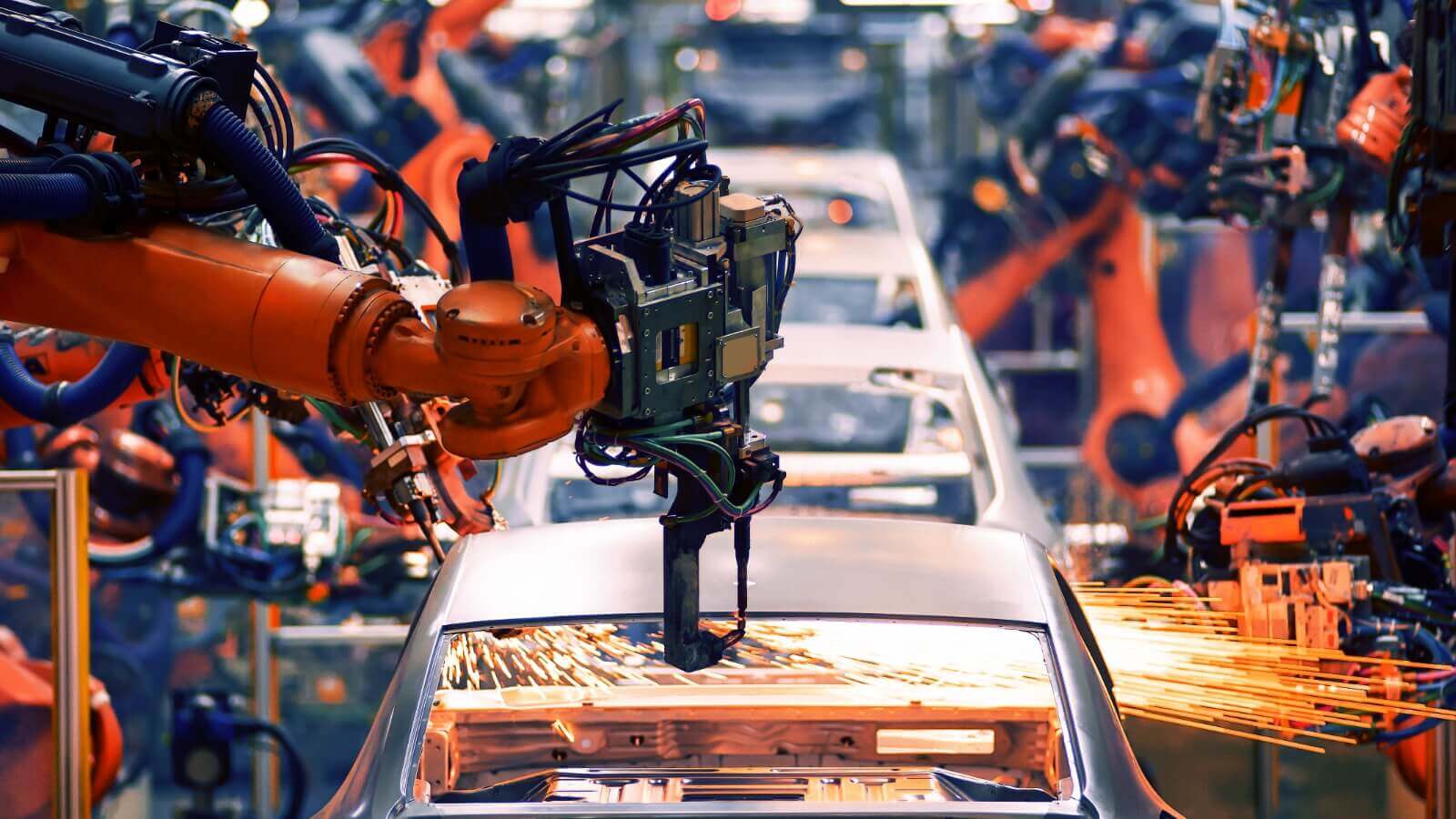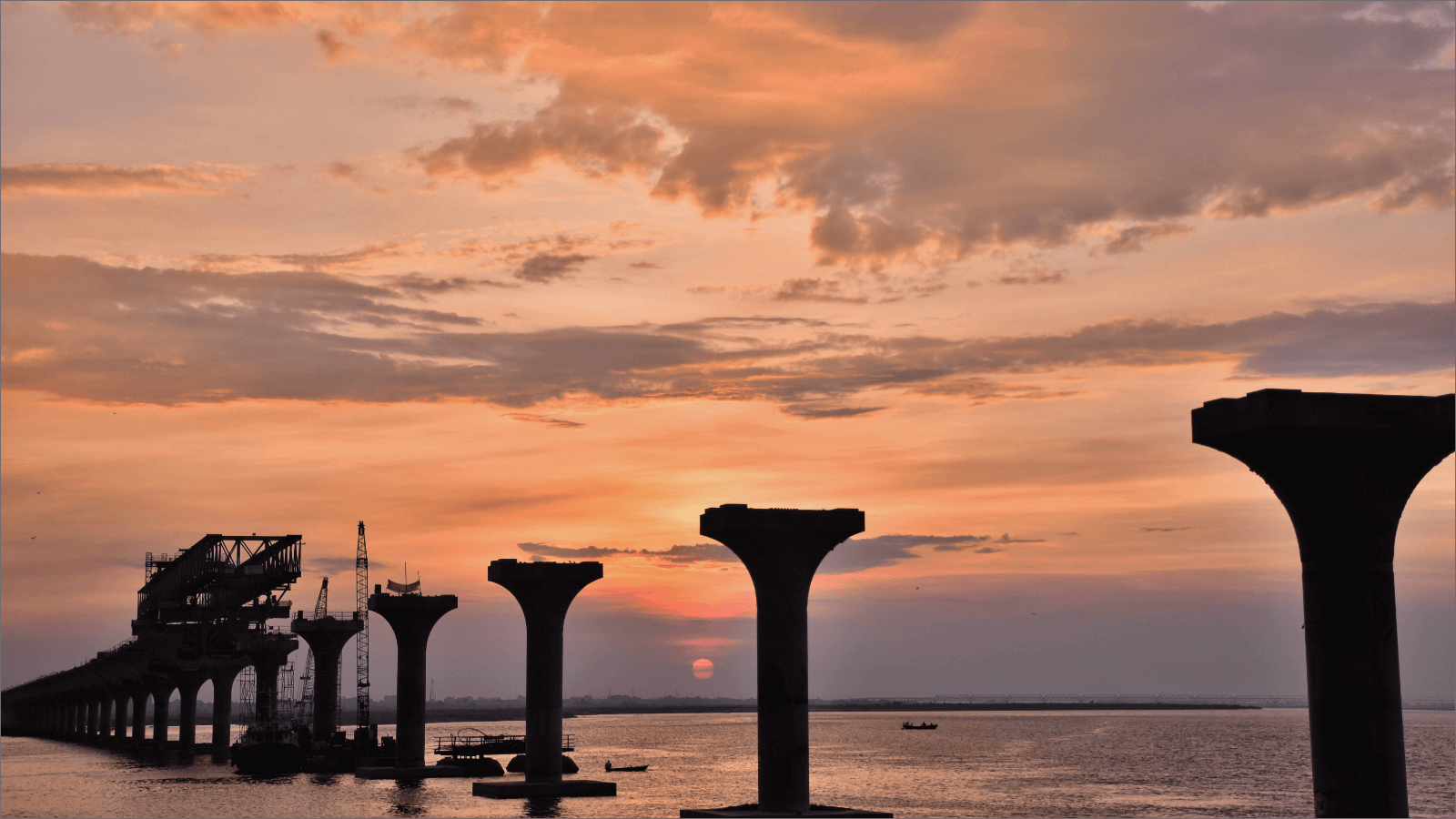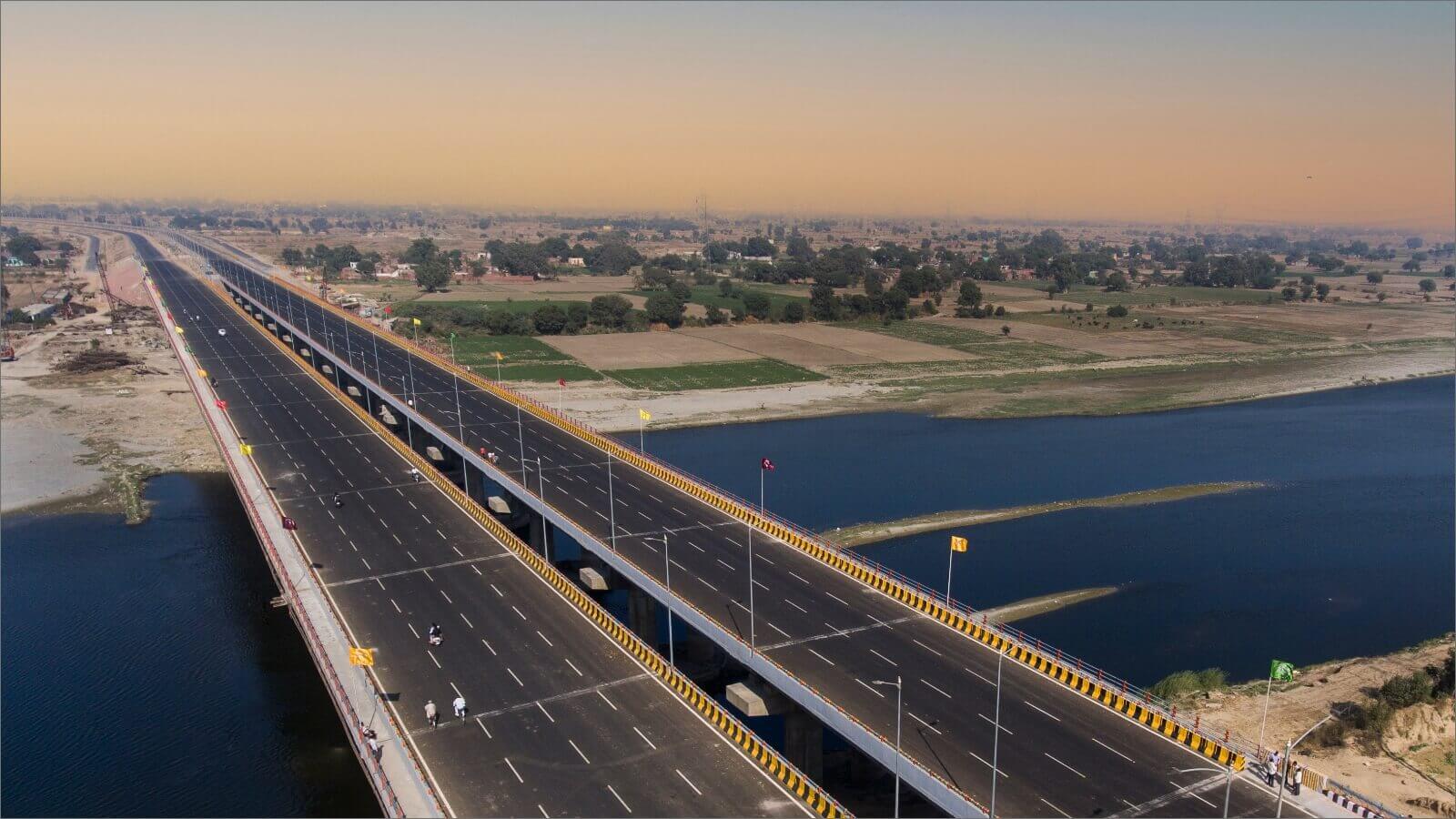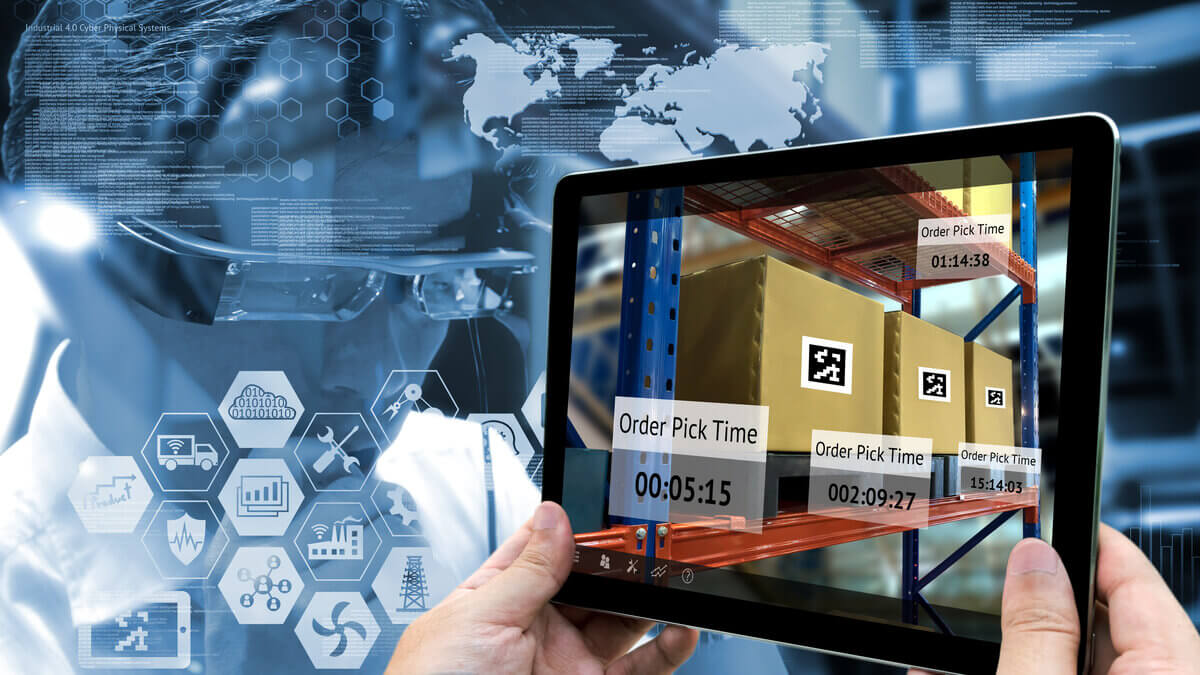Costs Bleeding Infra Projects and What EPC Companies Should Do?

Costs Bleeding Infra Projects and What EPC Companies Should Do?
The National Infrastructure Pipeline (NIP) is the most comprehensive registry of all infrastructure projects currently in progress in India. It lists more than 2400 active projects across 34 sectors in the country. However, a report amid the second pandemic wave in May 2021 recorded more than 470 projects suffering from project overruns. The total excess budget required was more than 61% of original estimates. It is likely that due to multiple factors, and not just the pandemic, this number is higher today.
Compliance: The main risks can be classified as technical or acquisition-related for the government. Construction technology estimates can change according to execution time, while delays in land acquisition can wreak havoc on the overall project timelines. We have to factor in social and environmental concerns in the acquisition phase that could have a spillover effect.
Procurement Strategies: 5 Ways Automobile Industry Can Unlock Savings and Add Value

Procurement Strategies: 5 Ways Automobile Industry Can Unlock Savings and Add Value
Sunrise on the East: The Purvanchal Expressway Story

Sunrise on the East: The Purvanchal Expressway Story
The 340 km long Purvanchal Expressway is a 6-lane wide (expandable to 8) newly launched expressway in Uttar Pradesh, India. It is currently the longest expressway in India and part of the four connected expressway visions of the U.P Government.
A Lifeline for Commerce, Trade and Transportation for East U.P and Bihar:
The Purvanchal Expressway connects Chand Saray village near Gosainganj in Lucknow district with Haydaria village on Mohammadabad–Buxar highway (NH-31) in Ghazipur district. It passes through 9 districts of Uttar Pradesh, i.e. (from west to east) Lucknow, Barabanki, Amethi, Sultanpur, Ayodhya, Ambedkar Nagar, Azamgarh, Mau and Ghazipur. The expressway also includes a 3.2 km long airstrip for emergency landings at Akhalkiri Karwat in Sultanpur district.
A Stellar Addition to an ever-impressive List of National Infrastructure Projects (NIP) in India:
The entire project was split into eight packages awarded to 5 contractors. Apart from these contractors, two independent companies were chosen to design one half of the expressway. The total project value (including land acquisition) is upwards of INR 22000 crores.
The total construction cost is around ₹11,216 crores. 22 Flyovers, 7 Railway-over-bridges (ROB), seven major bridges, 114 minor bridges, 6 Toll Plazas, 45 vehicular-underpasses (VUP), 139 Light VUP, 87 pedestrian underpass and 525 Box culverts have been constructed.
Paving A Carrier of Development for India:
Government sources have dubbed the Puvanchal expressway as the ‘spine of development’ for Uttar Pradesh. The project’s sheer scale (the largest of its kind) brings a significant upgrade to the economically under-developed districts and towns of Eastern U.P and neighboring states. The government has also planned eight industrial hubs along the expressway to boost commerce and job creation further.
The Purvanchal Expressway is an EPC-based project with multiple contractors. The seamless alignment of the contractors to the master design plan detailed by independent agencies was critical to the on-time completion of the project. While the second wave of the pandemic did introduce delays, the contractors and government were able to largely mitigate considerable delays in the launch.
The addition of an airstrip to the design of the expressway added additional material, labor and quality benchmarks per DGCA compliance standards.
A Digital Procurement Solutions Approach for New-Age Contractors
As one can imagine, a project of many moving parts needs intense coordination in procurement and the supply chain of raw materials, consumables, and made-to-order manufacturing solutions. A single missing link in the chain results in labor inefficiency, time delays and a bloated budget. Some key takeaways for EPC companies, contractors and suppliers to usher in a transformation in crucial infrastructure projects:
- Adopt a flexible, reliable and digital procurement solution to reduce the PR to PO cycle. A slight reduction in the time cycle can have a lasting impact on costs.
- Digital procurement enables end-to-end flexibility and transparency of the procurement chain, involving many materials like TMT bars, cement plates and ready mix concrete.
To know more about how an EPC solution can work for your construction or infrastructure project, reach out to Moglix. Explore the best raw material procurement solutions for infrastructure companies. Click here to know more: https://business.moglix.com/our-solutions/infrastructure
Connecting to New Growth Opportunities: The Gorakhpur Link Expressway

Connecting to New Growth Opportunities: The Gorakhpur Link Expressway
Packing a punch within a 91 km expanse, the Gorakhpur Link Expressway will have a total commercial outlay of INR 5876 crore. The expressway will connect the Gorakhpur district to the Purvanchal Expressway in Azamgarh district.
UP Government’s 3rd Major Infrastructure Development Roadway:
The Gorakhpur Link Expressway is the third announcement after the Ganga and Purvanchal expressway road projects announced by the state government in recent years. Clearances and inauguration were approved in 2018, and by January 2022, more than 50% of the earthwork had already been completed.
The chosen contractors (Apco Infratech and Dilip Buildcon) will build the expressway according to the Engineering, Procurement and Construction (EPC) model. It is expected to improve ground connectivity between Gorakhpur and Azamgarh and reduce travel time to less than 5 hours. The Gorakhpur link expressway will be linked with Varanasi through a separate link road in the future.
A Stellar Addition to An Ever-Impressive list of National Infrastructure Projects (NIP) in India:
The project is completely access controlled and will have relief service roads for local transport. It is expected to cover two toll plazas, three ramp plazas, 27 minor bridges, more than 50 vehicular underpasses for light vehicles, 16 vehicular tunnels and more than 30 pedestrian underpasses.
Highway to Economic Inclusion and MSME Growth:
The project was in danger of being severely delayed by the Covid19 pandemic and labor and supply chain issues caused by the two phases of the lockdown. However, through better planning and extraordinary efforts by the contractors, the project is expected to regain lost time to achieve its previous completion targets. The environmental footprint by reduced travel time and distance is enormous. It will also provide much-needed logistical relief to many industrial training and medical institutes expected to be built along the expressway.
Contractors dealing with a high complexity layer of suppliers for raw materials, expected delays, lockdowns and labor issues would do well to digitize their procurement backbone through a centralized platform for better visibility and predictability.
A Digital Procurement Solutions Approach for New-Age Contractors:
As one can imagine, a project of so many moving parts needs intense coordination in procurement and the supply chain of raw materials. A single missing link in the chain results in labor inefficiency, time delays and a bloated budget. Some key takeaways for contractors and suppliers to usher in a transformation in crucial infrastructure projects:
- Adopt a flexible, reliable and digital procurement solution to reduce the PR to PO cycle. A slight reduction in the time cycle can have a lasting impact on costs.
- Digital procurement enables end-to-end flexibility and transparency of the procurement chain, involving many materials like TMT bars, cement plates and ready mix concrete.
To know more about how an EPC solution can work for your construction or infrastructure project, reach out to Moglix. Explore the best raw material procurement solutions for infrastructure companies. Click here to know more: https://business.moglix.com/our-solutions/infrastructure
The Ganga Expressway Road Development Project: 5 Highlights

The Ganga Expressway Road Development Project: 5 Highlights
The 594 km long Ganga Expressway, a 6-lane wide (expandable to 8) expressway in Uttar Pradesh, will be the longest built under the DFBOT (design, finance, build, and operate) scheme. The expressway will connect Meerut to Prayagraj (erstwhile Allahabad).
A Gateway to the World-Famous Kumbh Mela:
The ambitious Ganga Expressway project was inaugurated in December 2021 and is expected to be completed in 2024. The expressway will run parallel alongside the river Ganga and connect the state’s west and east regions. It will pass through 12 districts of Uttar Pradesh, namely (from west to east), Meerut, Hapur, Bulandshahr, Amroha, Sambhal, Budaun, Shahjahanpur, Hardoi, Unnao, Raebareli, Pratapgarh and Prayagraj. It will connect Bijauli village near Kharkhauda on NH-334 in Meerut district with Judapur Dandu village near Soraon on NH-19 in Prayagraj district.
A Stellar Addition to an Ever-Impressive List of National Infrastructure Projects (NIP) in India:
The project will be a shining example of infrastructure development in India after completing both phases. Two private contractors (IRB and Adani Group) have won the right to execute the expressway as per the bidding rights that the UPEIDA awarded. The expressway has had special environmental clearance granted to it and is expected to serve as an artificial barrier alongside the banks of the River Ganga. The transit freeway will protect the flood-affected area in the districts it traverses.
Highway to Economic Inclusion and MSME Growth:
The Ganga Expressway project is a greenfield project estimated to be INR 36,000 crore in value, including land acquisition cost. It will cover 140 water bodies and have seven road overbridges, 17 interchange roads, 14 big bridges, 126 minor bridges, 28 flyovers, 50 vehicle underpasses, and 946 culverts. Suffice to say, the complexity in the procurement of raw materials across hundreds of suppliers is bound to increase the project complexity.
With special environmental clearance granted to the project, the raw material specifications and criticality of timelines will play a significant role in the successful and profitable completion of the project. The expressway is expected to cut short the travel time from Delhi to Prayagraj by almost 50%, besides providing impetus to the logistics needs of the agro-belt in the included districts.
A Digital Procurement Solutions Approach for New-Age Contractors:
As one can imagine, a project of so many moving parts needs intense coordination in procurement and the supply chain of raw materials. A single missing link in the chain results in labor inefficiency, time delays and a bloated budget. Some key takeaways for contractors and suppliers to usher in a transformation in crucial infrastructure projects:
- Adopt a flexible, reliable and digital procurement solution to reduce the PR to PO cycle. A slight reduction in the time cycle can have a lasting impact on costs.
- Digital procurement enables end-to-end flexibility and transparency of the procurement chain, involving many materials like TMT bars, cement plates and ready mix concrete.
To know more about how an EPC solution can work for your construction or infrastructure project, reach out to Moglix. Explore the best raw material procurement solutions for infrastructure companies. Click here to know more: https://business.moglix.com/our-solutions/infrastructure
Infrastructure Makeover in Progress: Bundelkhand ExpressWay

Infrastructure Makeover in Progress: Bundelkhand ExpressWay
The 296 km long Bundelkhand Expressway is a 4-lane wide (expandable to 6) under-construction access-controlled expressway in Uttar Pradesh, India. It is the 4th currently under construction expressway in India’s most populous state.
An Expressway to a Significant Cultural and Pilgrimage Center, Chitrakoot:
While the state government of Uttar Pradesh announced the Bundelkhand expressway project in 2017, the foundation stone ceremony took place in February 2020 at the hands of the Hon. Prime Minister Shri Narendra Modi. Bundelkhand Expressway will pass through 7 districts of Uttar Pradesh, i.e. (from north to south) Etawah, Auraiya, Jalaun, Hamirpur, Mahoba, Banda and Chitrakoot.
A Stellar Addition to an Ever-Impressive List of National Infrastructure Projects (NIP) in India:
The ambitious project will run a distance of 296 km. Its construction cost is estimated to be around INR 7,766 crores. The construction work is divided into six packages and awarded to 4 different contractors who will construct 4 railway-over-bridges (ROB), 14 major bridges, 268 minor bridges, 18 flyovers, 6 Toll Plazas, 7 ramp plazas and 214 underpasses. The real value add of the expressway will be the boost it will give to the cultural and religious tourism in the districts while also connecting some of the state’s most underdeveloped communities to the bustling National Capital Region (NCR).
Paving the Road to a Fast-Tracked Infrastructure Ecosystem in India:
Being built under the auspices of the National Infrastructure Pipeline, the Bundelkhand Expressway follows the recent trend of large infrastructure projects awarded on an Engineering, Procurement and Construction (EPC) model. The design, construction and handover of the complete expressway thus become the end-to-end responsibility of the contractors.
There are two significant challenges for contractors, suppliers and vendors associated with the project. First, the far-flung and underdeveloped nature of the districts represents logistical nightmares for a stable supply chain of raw materials. Second, the expressway is a critical element of the Defense Corridor development in Uttar Pradesh. Delays in construction translate to rising costs for the contractors and the government alike.
A Digital Procurement Solutions Approach for New-Age Contractors
As one can imagine, a project of so many moving parts needs intense coordination in procurement and the supply chain of raw materials, consumables, and made-to-order manufacturing solutions. A single missing link in the chain results in labor inefficiency, time delays and a bloated budget. Some key takeaways for EPC companies, contractors and suppliers to usher in a transformation in crucial infrastructure projects:
- Adopt a flexible, reliable and digital procurement solution to reduce the PR to PO cycle. A slight reduction in the time cycle can have a lasting impact on costs.
- Digital procurement enables end-to-end flexibility and transparency of the procurement chain, involving many materials like TMT bars, cement plates and ready mix concrete.
To know more about how an EPC solution can work for your construction or infrastructure project, reach out to Moglix. Explore the best raw material procurement solutions for infrastructure companies. Click here to know more: https://business.moglix.com/our-solutions/infrastructure
Vendor Consolidation Vs. Diversification: What is the Best Supply Chain Strategy?

Vendor Consolidation Vs. Diversification: What is the Best Supply Chain Strategy?
The pandemic brings the focus back on the classic debate: vendor consolidation or vendor diversification? Which of the two is the right supply chain management strategy. If your sourcing managers are searching for an answer to the question, we have got you covered. The truth is that your supply chain’s digital readiness can make all the difference to the answer.
What is Vendor Consolidation and What are its Benefits?
Vendor consolidation is a strategy to rightsize the existing supplier base and make it more cost-efficient, quality-centric, and stable. A vendor consolidation strategy will require you to map the value and category of procurement against each supplier and procure more industrial supplies from a chosen few suppliers. You can now reduce the number of vendors and reap the following benefits:
- Reduced Purchase Costs: When you purchase higher volumes of industrial supplies from handpicked suppliers, you will have higher bargaining power and ask for discounted prices. You can also explore the option of annual rate contracts to seek effective insulation against price increases.
- Reduced Process Costs: Once you reduce the number of suppliers, you will reduce the number of purchase orders and invoices. You will reduce the turnaround time for placing orders by integrating more line items in each order. You will reduce your process costs.
- Reduced Mismatches in Supplies: One of the hurdles of a large supplier base is many supplier codes, material codes, and supplier catalogs. Vendor consolidation allows your sourcing managers to work with fewer supplier codes, material codes, and catalogs. You will reduce the scope of mismatches between items that you order and those that you receive.
- Improved Supplier Relationships: When you increase your purchase orders’ value, suppliers will undoubtedly accord greater attention to your requirements. You can look forward to stable and reliable supplier relationships over the long term.
What is Vendor Diversification and What are its Benefits?
A vendor diversification strategy will require you to spread out your supplier base and work with many suppliers. Following are the benefits of vendor diversification:
- Opens Multiple Channels of Sourcing: Vendor diversification opens up multiple sourcing channels for your enterprise. It spreads out the procurement risks across a large number of suppliers and reduces your dependence on each supplier.
- Promotes Innovation and New Product Development: Vendor diversification augments innovation and new product development. You can engage with multiple suppliers, browse through their offerings, and select the one that fulfills your requirements.
- Promotes Competition among Suppliers: One of the benefits of diversifying your vendor base is that you have greater flexibility to choose your suppliers for each purchase order. It allows you to create an environment for competitive bidding and opt for the lowest price to get a competitive advantage.
What is the Best Supply Chain Strategy?
The best strategy depends on product category, procurement processes, and technology maturity. In the long run, for large and growing businesses, vendor consolidation provides the scale with reduced costs. The pandemic experience has shown that effective supply chain risk management calls for visibility into procurement.
Digital procurement solutions allow you to leverage analytics, map supplier performance, and make purchasing decisions. You can lean on an integrated platform with an inclusive supplier ecosystem and a single catalog managed by a single point of contact. This way, you can consolidate your supplier base, re-engineer your procurement process, and de-risk your supply chain.
5 Priorities for CXOs to Unlock the Manufacturing Supply Chain

5 Priorities for CXOs to Unlock the Manufacturing Supply Chain
Is a turnaround just around the corner for the manufacturing supply chain in India? Insights from various manufacturing indices suggest that while aggregate performance continues to be sub-optimal, the upward plateauing of some verticals suggest that distant signs of recovery may not be too far away after all despite the weak sentiments prevailing now. The dip in the Nomura Business Resumption Index from 70 to 66 over the first fortnight of July, suggests the manufacturing engine cooling down. Despite the Markit PMI rising from 31 in May to 47 in June 2020, industry verticals have continued to grapple with challenges of constrained capacity, weak demand, contraction of the workforce and lack of alternate supplier sites for import substitution. Moglix Business is partnering with manufacturing enterprises to make sense of these emerging patterns and identify the priorities that CXOs need to address to unlock the manufacturing supply chain. Explore these top 5 priorities here.
Read:COVID19: The Three Phases of Recovery in Manufacturing
Map Supplier Clusters, Demand Centers and Labor CorridorsThrough the Pandemic
In India, manufacturing supply chains are highly intertwined and consist of a complex matrix of supplier clusters, demand centers, and highly concentrated labor corridors. CXOs in manufacturing enterprises need to map the exposure of their respective supplier clusters, demand corridors, and labor corridors to the contagion to identify their supplier downtime, time to recovery (TTR), and the spikes in logistics and supply chain management costs. One hundred thirty districts in the country account for 38% of manufacturing output, 50% of final private consumption, and 40% non-farm employment. Many of these districts are still in the red zones. These insights explain the contraction of output and the sub-optimal capacity utilization in the range of 28-63%. Moreover, 50% of truckers in the logistics and construction sectors come from just 15 of these districts. It explains why workforce deployment has continued to be 33-57% and why consumer demand is yet to pick up.
Read: How to Reduce Coronavirus-led Supply Chain Disruptions
Track and Trace Opex Regularly Amidst Shrinking Revenue and Output
Keeping track of the OPEX and managing indirect and direct expenses is imperative to create new avenues of efficiency. The rise in direct and indirect costs facing manufacturing enterprises is due to higher overhead costs of safety protocols, loss of economies of scale due to a drastic reduction in volumes, high freight charges, and other logistic expenses, increased costs of raw materials, power cost and high costs of debt financing. CXOs in Indian manufacturing enterprises need to pivot their management of indirect costs on line items like MRO inventory, packaging materials, packaging design, maintenance, and interest payments on suppliers spend analytics through digital procurement platforms. Digital platforms that run on artificial intelligence and machine learning can enable CXOs to stay informed on evolving developments in the supply chain, exercise higher control on strategic sourcing, and regularly track and trace OPEX from anywhere and at any time.
Realign Supplier Networks to Facilitate Import Substitution
Manufacturing enterprises have continued to witness a decline in exports for four consecutive months during the pandemic. Trade wars and geopolitics have already weakened the global trading environment. The pandemic has caused further supply chain disruptions for several verticals like automotive, textiles machinery, leather goods, footwear, electronics, and electrical equipment. Consequently, these verticals have continued to register abysmal manufacturing output thus far. The erosion of trust in supplier networks with high exposure to one country calls for CXOs to explore import substitution opportunities for their strategic sourcing. While import substitution and realignment of global supply chains are strategic actions, Indian manufacturing enterprises need to avoid further procurement risks. CXOs need to explore strategic partnerships with local industrial suppliers through digital supplier collaboration models to achieve agility at scale in their import substitution efforts and hit the ground running.
Digitize Procurement Processes to Reduce Fixed Costs and De-Leverage
One of the significant challenges facing CXOs in Indian manufacturing enterprises is the resilience of their balance sheets and cost structures. Research suggests that fixed costs account for 20-35% of the total costs for Indian manufacturers due to a high CAPEX on investments in land, plant, equipment, and machinery.CXOs of Indian manufacturing enterprises need to rationalize costs in the short term while creating opportunities to move towards leaner fixed cost models in the long run. Leveraging digital models for the automation of cost centers like procurement organization, supplier collaboration, and quality control can enable supply chain leaders in manufacturing to transform fixed costs incurred on these functions into variable costs and achieve the targeted balance sheet impacts. At Moglix Business, we have seen enterprises that have migrated towards e-procurement models save up to 5% on direct and indirect costs.
Read: What Does Procurement Transformation for the Next Decade Looks Like
Digitize Sales and Distribution Processes to Open New Revenue Streams
The unlocking of the economy has shifted from a cold turkey and holistic approach to a more decentralized and localized one. The uneven spread of the contagion across regions in the country makes it difficult for Indian manufacturers to operate their sales and distribution functions. Technology penetration in Indian manufacturing enterprises is below 5%. One of the significant opportunities for CXOs in Indian manufacturing is to leverage digital B2B commerce models to restart the engines of revenue enablement while ensuring that sales and distribution people, distributors, and customers continue to collaborate from the protected environments of their homes. Research shows that OEMs and authorized distributors of industrial supplies that have leveraged digital B2B commerce models are likely to stay ahead of their contemporaries as the economy continues to move towards recovery gradually.
Reducing Coronavirus Led Supply Chain Disruptions Now and Building Resilience for the Future

Reducing Coronavirus Led Supply Chain Disruptions Now and Building Resilience for the Future
Credit ratings agency Fitch that had earlier pegged India’s real GDP growth rate for FY 2020-21 at 5.6% has now projected that the disruption caused by the contagion of the Novel Coronavirus throughout an integrated global economy could slow India’s real GDP growth rate by 0.5-1%. This projection notwithstanding, visibility into the impact on the global economy has been hard to come by. Josef Oehmen, associate professor at the Technical University of Denmark (DTU), Engineering Systems Design Group asserts that the Covid19 pandemic has no precedence that businesses can point to, no personal experience that corporate leaders can count on, no historical data for consultants to call on and therefore: there is no risk-adjusted value for businesses to act upon.
In fact, not since the end of the Second World War have countries and corporations experienced a supply chain disruption of such global scale and magnitude coupled with loss of lives of such tragic proportions.Prof. Patrick Hanohan from Trinity College Dublin asserts that even if the death rate is as low as in the case of flu deaths due to effective containment, there shall be repercussions: supply chain challenges in the short term and weakening of demand and spending cuts in the intermediate-term.
Wading Through Troubled Waters Now: Mitigating the Supply Chain Disruptions Due to Covid19
Given the spread of the pandemic across the globe, several industry verticals in the manufacturing sector are faced with immediate supply chain challenges.
First, is the dependence of some of the world’s largest companies or their suppliers that either has supply chain and procurement exposure to quarantined areas across three major economies: China, Italy, and South Korea. A study published in the Harvard Business Review asserts that 1000 such companies or their suppliers own more than 12000 facilities in such quarantined areas. Industry verticals with the highest supply chain and procurement exposure to quarantined areas in China, Italy, and South Korea include automotive, industrial engineering and heavy machinery (2,730), high tech and consumer electronics (3,238), healthcare (1,562) and consumer goods(1,139).
Second, in the context of the lockdowns announced by several regimes across the globe to suppress the spread of the contagion, enterprises in industry verticals like life sciences, healthcare, pharmaceuticals, and medical devices that need to produce “essential goods” urgently have been affected adversely. Major categories of supplies of these enterprises procured from quarantined areas include packaging, personal protection, medical dispensers, sterilized dressing pads, cables, and active ingredients.
What Needs to Be Done Immediately to Minimize Supply Chain Risks?
Given the supply chain disruptions facing enterprises in the manufacturing sector, the following contingency measures may be deployed on a war footing to save the lives of people and ensure the availability of goods:
First, enterprises need to create a contingency organizational structure to respond to the situation with a central leadership team at the corporate level showing the way. The central leadership team may be supported by a customer response team and most importantly a supply chain planning and operations team.
Second, the central leadership team shall have to ensure visibility into layered supply chains. They can do so by creating a database of components that are “critical to the mission”, trace the origin and flow of procurement and explore substitute suppliers.
Third, the customer response team may be entrusted to objectively assess the available inventory, calculate quantities of spare parts and after-sales-stock to keep manufacturing up and running and ensure downstream supply chain mobility and distribution to customers.
Fourth, the supply chain planning and operations team may be tasked with ensuring the first ring of personal safety for people by providing personal protective equipment (PPE) and collaborating with people on the production floor shop, warehouses, and nodal points in the supply chain to regularly monitor infection-risk levels. Further, the supply chain planning and operations team can do well to engage in logistics planning, identify points of risk, ensure the safety of goods during transit through effective sanitization and packaging and push for faster delivery of goods.
Recovering from the Economic Impacts on Covid 19 in the Intermediate-Term
Coming out of the Coronavirus crisis, business engagements will likely to be transformed forever.
First, enterprises that sail through the crisis shall like to adopt some of the major elements of their contingency measures to create a supply-chain risk function team. Such supply chain risk teams may be entrusted with the responsibility to map supply chain risks continuously and provide objective assessments to aid decision making in the domain of supply chain management and oversee risk governance.
Second, moving forward it shall be imperative for enterprises to strengthen supplier collaboration and work with entire supplier ecosystems that can provide a de-risked, geographically spread out and diverse model for global procurement.
Third, in the aftermath of the Coronavirus crisis, as enterprises shall stagger back to a new normal, they should ideally invest in the digitization of their supply chains to augment efforts of the supply chain risk team to anticipate the road ahead. Given the impact that the pandemic has had on supplier collaborations and contract compliance and obligation management of the manufacturing sector, it shall make enormous good sense for enterprises to invest in early warning systems, forecasting tools and comprehensive contract automation software suites that leverage artificial intelligence and machine learning capabilities. Returns from such investments in supply chain digitization assets shall manifest in the form of predictability of supplier capacity, turnaround times and rational expectations of risk factors and thus enable them to adjust their position in the market with time at hand.
Parting Comments and Epilogue: A Window into Supply Chains Post Coronavirus
Even as enterprises across the global economy continue to grapple with the challenges of the Coronavirus pandemic it is still unclear what the supply chain of the future would look like. However, amidst all uncertainties, one thing is clear: business won’t be business as usual and those that survive shall have to look at the supply chain function through a completely different lens that shall resemble the challenges and solutions of the future.
As Prof. Hua Lee, from the Department of Information and Technology at Stanford Graduate School of Business has observed, it shall not be enough to know what’s happening in your supply chain. Enterprises would need visibility outside their supply chain, know the capacity of other suppliers and modes to deploy them immediately when needed. Operational hedging shall be a necessity in the supply chains of the future with global suppliers being managed by inclusive procurement ecosystems driven by vendor consolidation. Parallely there shall be a greater need to increase logistical flexibility, design alternate transit routes and expand the geographical spread of warehousing facilities.
